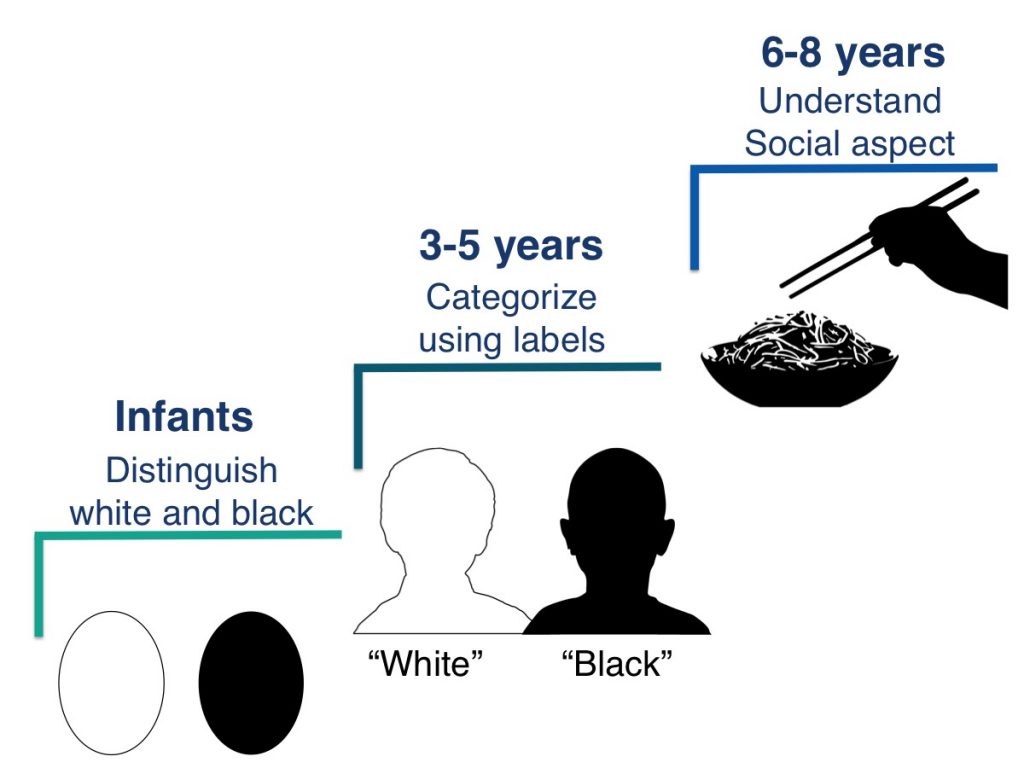
Scientific research today continues to enhance our understanding of how kids see and make sense of race. At the most primitive level, even infants can distinguish between Black and White faces. Between the ages of 3-5 years, children can categorize themselves and others using racial labels. When children enter formal schooling, they often talk about race in terms of physicality. This is the biology of race – skin color, hair color or heredity, how kids match their parents. For example, kids may say that being White means, “you have a White mom and dad and you’re born with their same skin color.” During the school-aged years, children begin to focus on the social aspect of race, which includes behaviors, personality traits, group differences and comparisons. Here are several examples. A child may explain that being Black means that “you talk different and have a different voice, and you wear different clothes than White people.” Or a Chinese child might describe being Chinese as “speaking a different language and eating different food that White people don’t eat.” These social and behavioral descriptions of racial group differences are the tools that children use to make sense of race.
-
- Bias
- the belief that some people or ideas are better than others, usually resulting in unfair treatment
- Biological race
- physical racial features such as skin color, hair textures, and facial features
- Explicit racism/bias
- racism that is plainly expressed through words and or actions
- Implicit racism/bias
- racism that hides in our unconscious biases and gets expressed in our actions
- Racism
- the beliefs and practices that uphold and reinforce inequalities based on race
- Social identity
- a person’s sense of self that is based on group membership
- Social race
- The social norms, attitudes, beliefs and behaviors that accompany racial groups
- Systemic racism
- policies, practices, and laws that reinforce social inequalities by discriminating against groups of people, either directly or indirectly, and limiting their rights